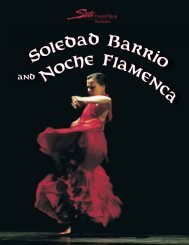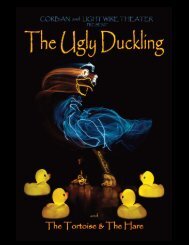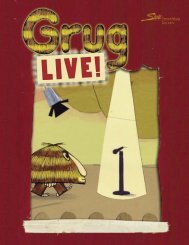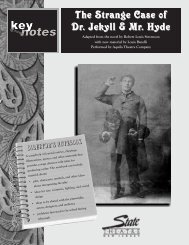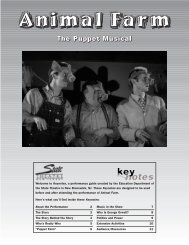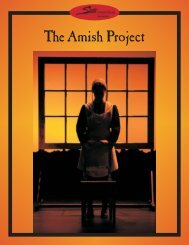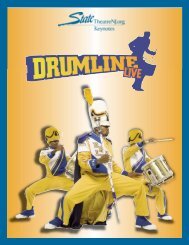Bernarda Alba.qxd - State Theatre
Bernarda Alba.qxd - State Theatre
Bernarda Alba.qxd - State Theatre
- No tags were found...
You also want an ePaper? Increase the reach of your titles
YUMPU automatically turns print PDFs into web optimized ePapers that Google loves.
Federico García Lorca 3Federico García Lorca was born in Fuente Vaqueros, a small farmingtown outside of Granada, Spain. When he was 11,JESUIT - a RomanLorca moved with his family to the city and attendedCatholic religiousa Jesuit school. He later enrolled in the Universitygroupof Granada, where he concentrated on writing poetry,painting, playing the piano, and reading great literature from Spain, LatinAmerica, and France, Shakespeare, and Spanish and Greek drama.In 1919, Lorca moved to Madrid, where he met influential Spanishartists including the painter Salvador Dalí and film director Luis Buñuel.He staged his first major play, which closed after just four performances.Despite this failure, Lorca persisted, and in 1927 his play, Mariana Pineda,with stage settings by Dalí, opened to much acclaim in Madrid. During the1920s, Lorca’s greatest success was as a poet. He published Libro depoemas (Book of Poems) in 1921, his celebrated Canciones (Songs) in 1927,and Primer romancero gitano (Gypsy Ballads) in 1928.Though at the height of his fame, Lorca suffered increasingly fromdepression, which was made worse by having to conceal his homosexualityfrom friends and family. Hoping a change of surroundings would improvehis outlook, he traveled abroad. He spent a good deal of time in New York,a city he found “Babylonic, cruel, and violent” but also “filled with a greatmodern beauty.” His trip resulted in a book of poetry entitled The Poet inNew York.Lorca returned to Spain in 1930 and was appointed director of agovernment-sponsored student theater company that toured Spain,introducing rural audiences to classic Spanish theater. At this time, hewrote his best-known plays, the ‘rural trilogy’ of Bodas de sangre (BloodWedding), Yerma, and La casa de <strong>Bernarda</strong> <strong>Alba</strong> (The House of <strong>Bernarda</strong><strong>Alba</strong>). Lorca completed La casa de <strong>Bernarda</strong> <strong>Alba</strong> in the last year of his lifebut never had a chance to see it performed.In July 1936, at a time of tremendous political unrest, Lorca ignored hisfriends’ warnings and left Madrid for Granada. Two days later, civil warbroke out in Spain between the Spanish Republic and nationalist rebels(Fascists) led by General Francisco Franco. Lorca’s brother-in-law, themayor of Granada, was arrested and then executed by Franco’s forces. OnAugust 16, Lorca himself was arrested and then put to death. To thisday, the reason for his execution still remains a mystery; as a publiccelebrity whose family sided with the republican cause, he mayhave been considered a threat by the Fascists. After hisexecution, Lorca was buried in an unmarked grave in a grove ofolive trees. In an effort to erase the author’s existence, much ofhis work was banned and, until recently, was not published orproduced.Federico García LorcaLa casa de la poesíaLorca is equally celebrated as aplaywright and a poet. While his playsare not literally poems, they oftenmake use of poetic language.Try creating your own poem, in Englishor in Spanish, in the voice of one ofthe characters from La casa de<strong>Bernarda</strong> <strong>Alba</strong>. What subject wouldyour character be most likely to writeabout? What would she have to say?Once your poem is completed, gettogether with your classmates tostage a <strong>Bernarda</strong> <strong>Alba</strong> poetry reading.See if the audience can figure outwhich character from the play isspeaking in each poem.Because the Fascistregime in Spain worked so hard tosuppress Lorca’s work, La casa de<strong>Bernarda</strong> <strong>Alba</strong> was not published orperformed until almost a decade after itwas written. The play was finally producedand published in Argentina in 1945.It was not produced in Spainuntil 1964.



